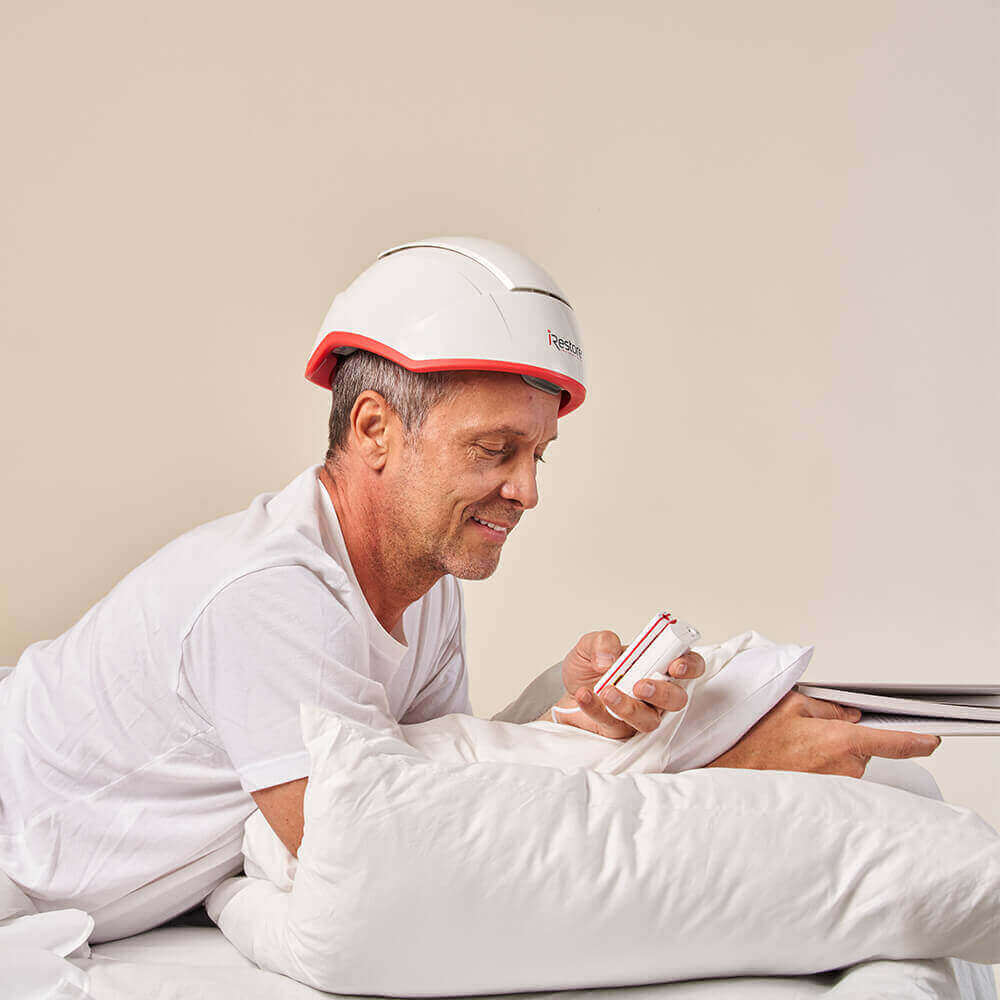iRestore
The current landscape of managing hair loss in men and women.
Apart from traditional medical therapy for male and female pattern hair loss, the science of laser hair therapy has shifted how dermatologists approach alopecia (hair loss) .
Lasers and diodes are a proven method to grow your hair and prevent hair thinning. These hair regrowth devices are designed for at-home use meaning treatments are convenient and cost effective. Let us explore the science of Low level laser therapy (LLLT) and its role in the management of hair loss.
What is the level of evidence for low level laser therapy?
Depending on the device and quality of trials, response rates vary from 70% to an astonishing 100% response rate. For those who respond, we can expect up to 43.2% increased visible hair growth.
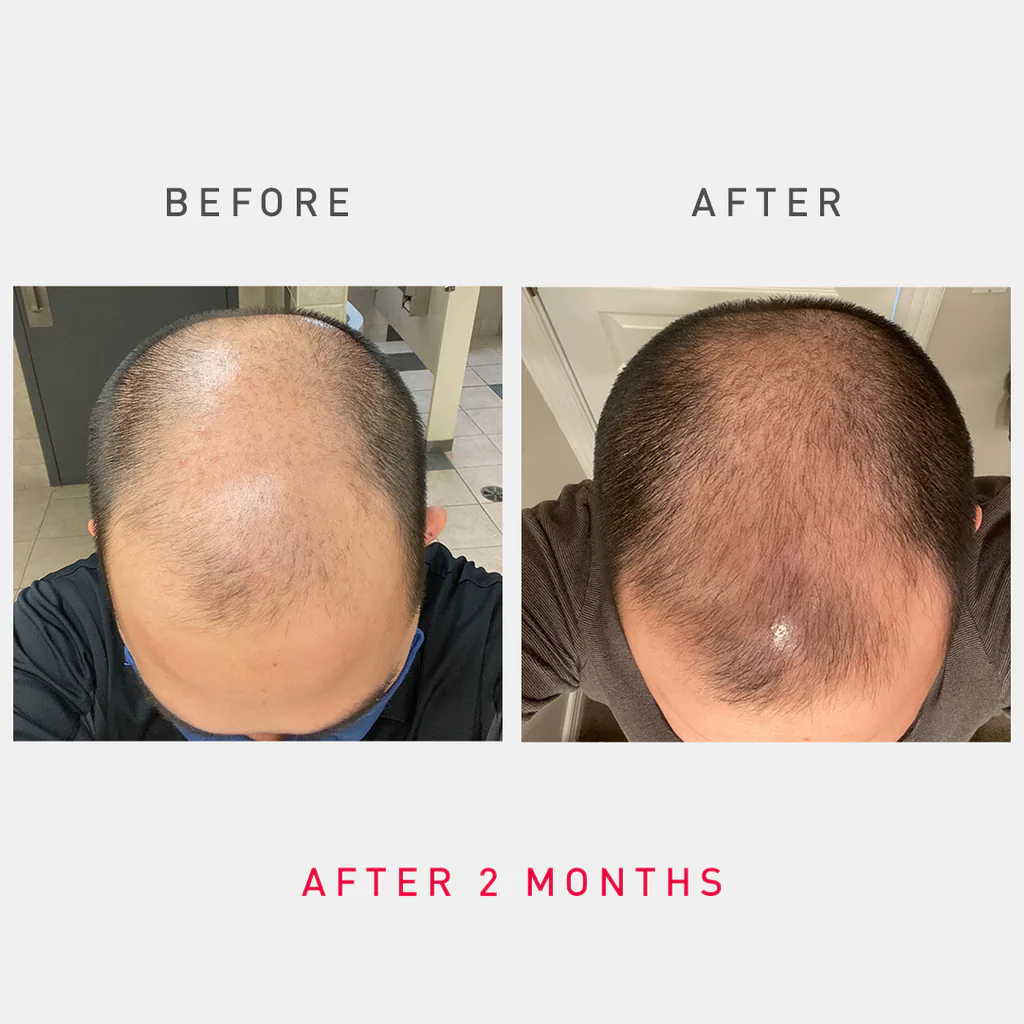
Image source: iRestore Hair Growth System

Image source: iRestore Hair Growth System
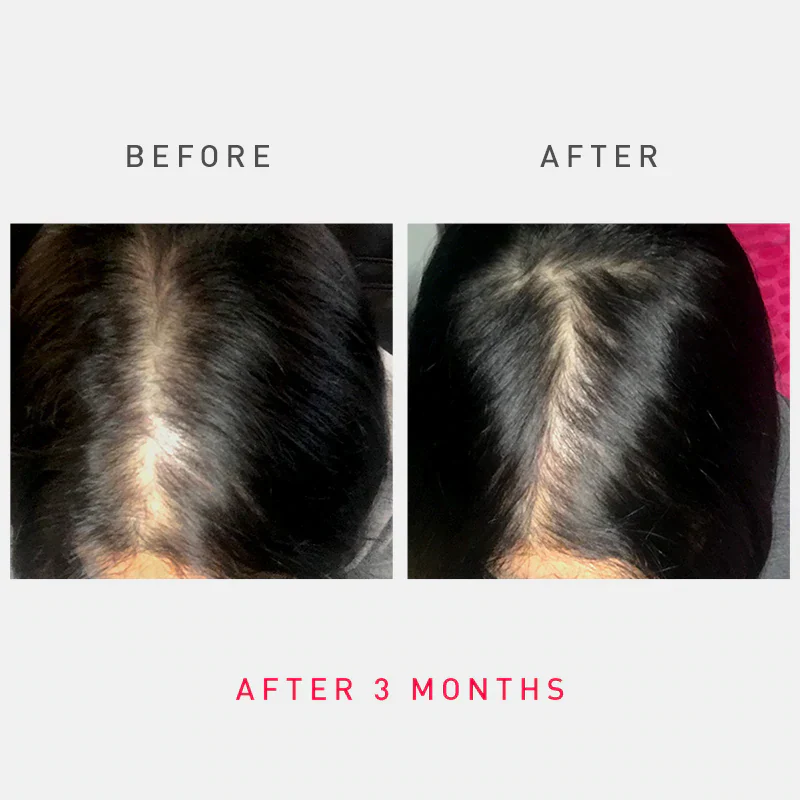
Image source: iRestore Hair Growth System
What should you look for when considering a laser hair restoration device?
The two most important factors when looking for a hair restoration laser device is the ease of use (which dictates compliance, more on that later), and power output.
Helmets are the preferred laser system, as they have the highest level of compliance. Helmet goes on, timer is set, lasers and diodes do the rest. Systems like the iRestore are hands-free, in comparison to wands and combs. This means you can continue your daily chores whilst wearing the helmet, in turn saving your precious time.
The second factor to consider is power output and delivery. Science has shown that combining two light delivery systems provides the greatest coverage and stimulation of hair. Again the iRestore excels in power delivery as it contains 282 lasers and LEDs. Laser enables light to penetrate the more dense areas of the scalp, whilst LEDs offer a breadth of treatment, namely coverage to thinning areas.
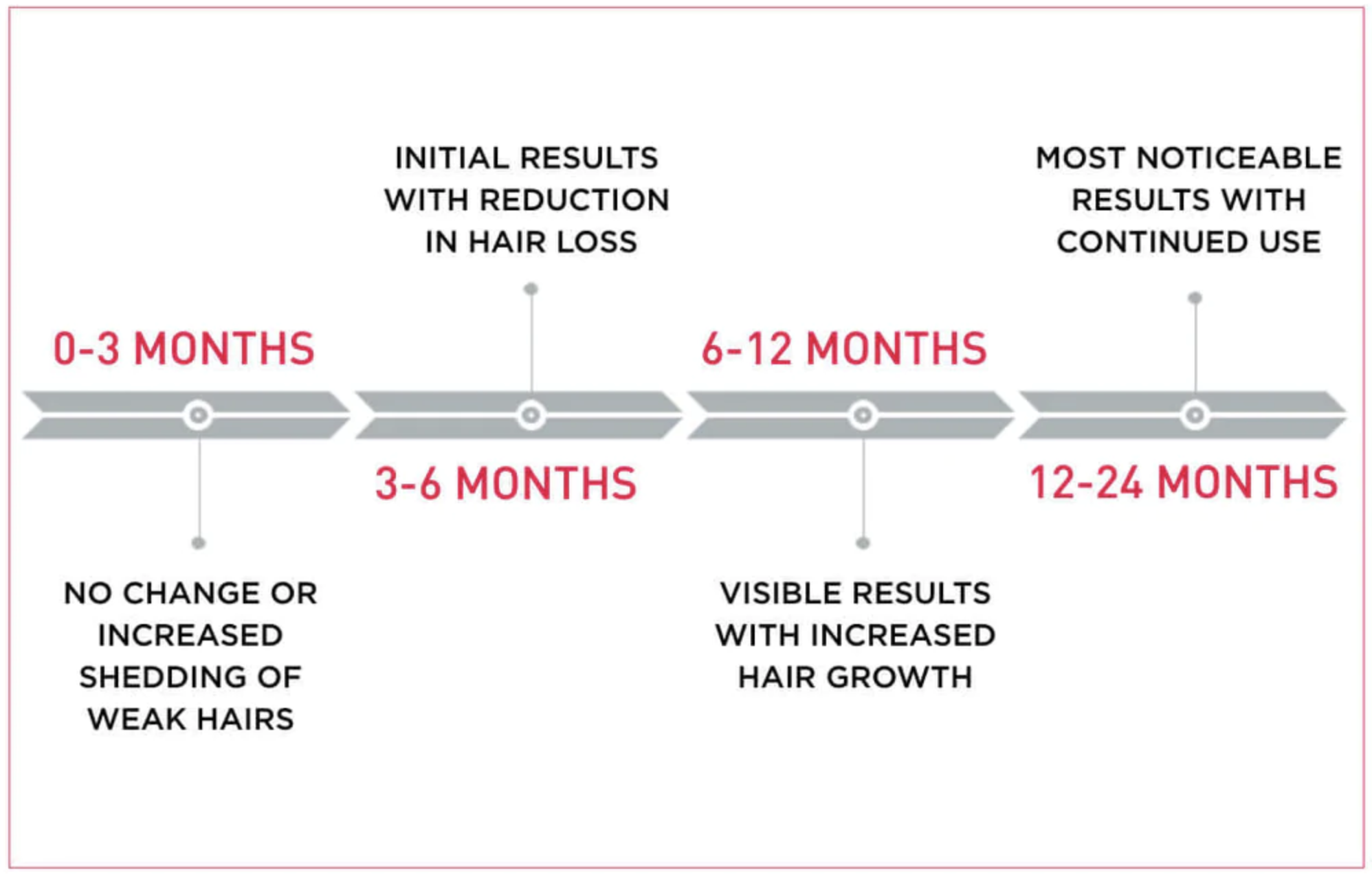
How many times should you undertake LLLT for hair regrowth?
Powerful systems such as the iRestore require 3 treatment sessions per week, every other day for optimal results. Each session takes 25 minutes to perform in the convenience of your home environment.
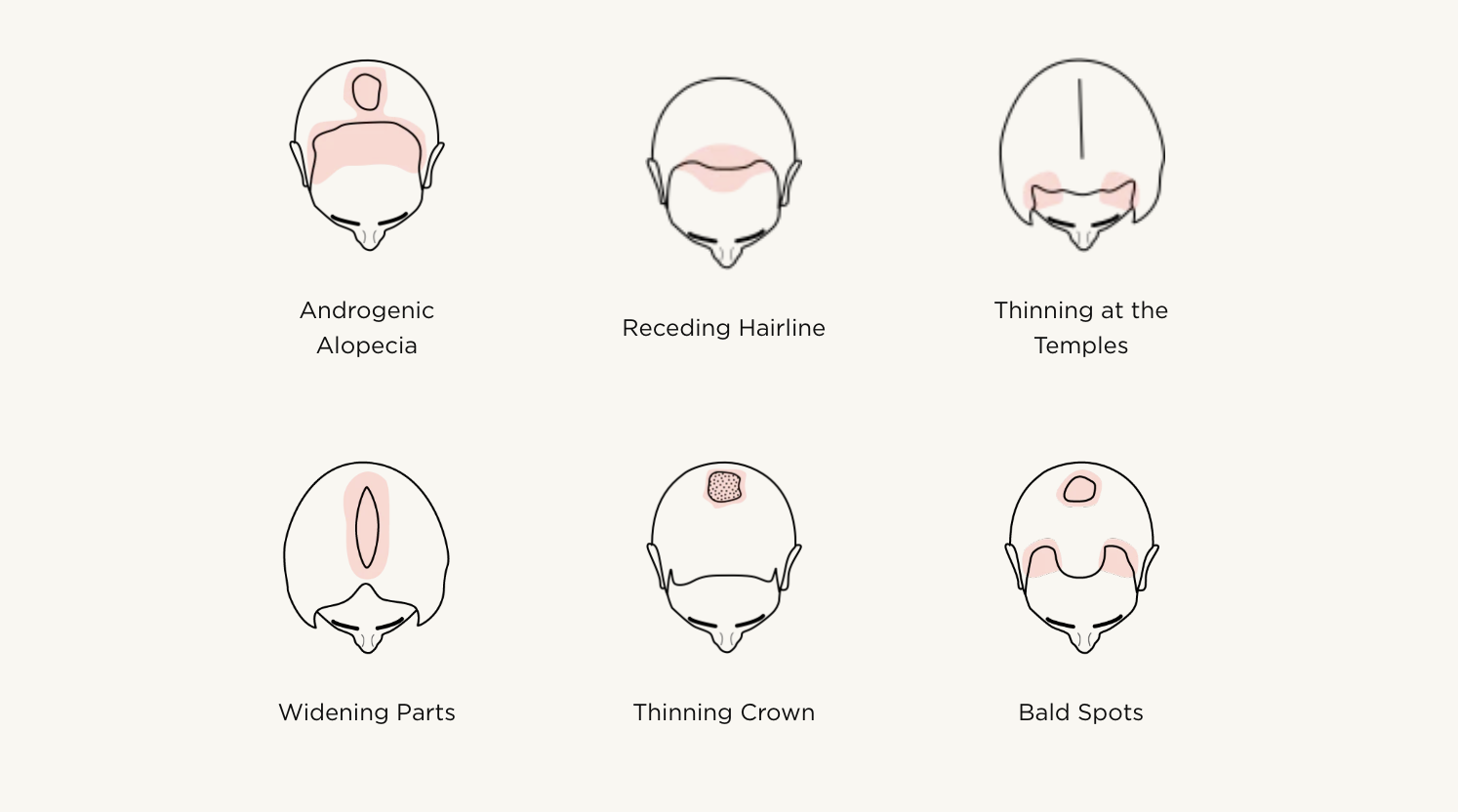
Does low level laser therapy work for all forms of hair loss?
Most of the data surrounding LLLT is for male or female patterned hair loss, also known as androgenetic alopecia. This is the most common form of hair loss, affecting 20% of females and up to 50% of males.
For more complex causes of hair loss such as telogen effluvium, vitamin deficiencies, and autoimmune conditions, a dermatologist can assist in the diagnosis and management.
Who is a good candidate for laser hair restoration?
Laser hair therapy is meant for men and women with all lengths of hair that are noticing thinning. This would potentially mean they are in the early stages of hair loss. Therapy can be safe and effective in adult patients of all ages and ethnicities. Low level laser therapy works best for people with early to mid stage androgenetic alopecia, with hair loss affecting frontal patterns (receding hairlines), vertex (top or crown) and diffuse patterns (all over).
How safe is laser hair restoration?
Systems including the iRestore are FDA cleared for both safety and efficacy. Some patients experience what is known as effluvium or temporary hair shedding. Don’t worry, it doesn’t happen to normal hair, but usually affects hairs in their resting phase. This phenomenon is your body’s message to exit older and weaker hair follicles, making way for new regrowth. Effluvium is self limiting and typically lasts a few weeks.
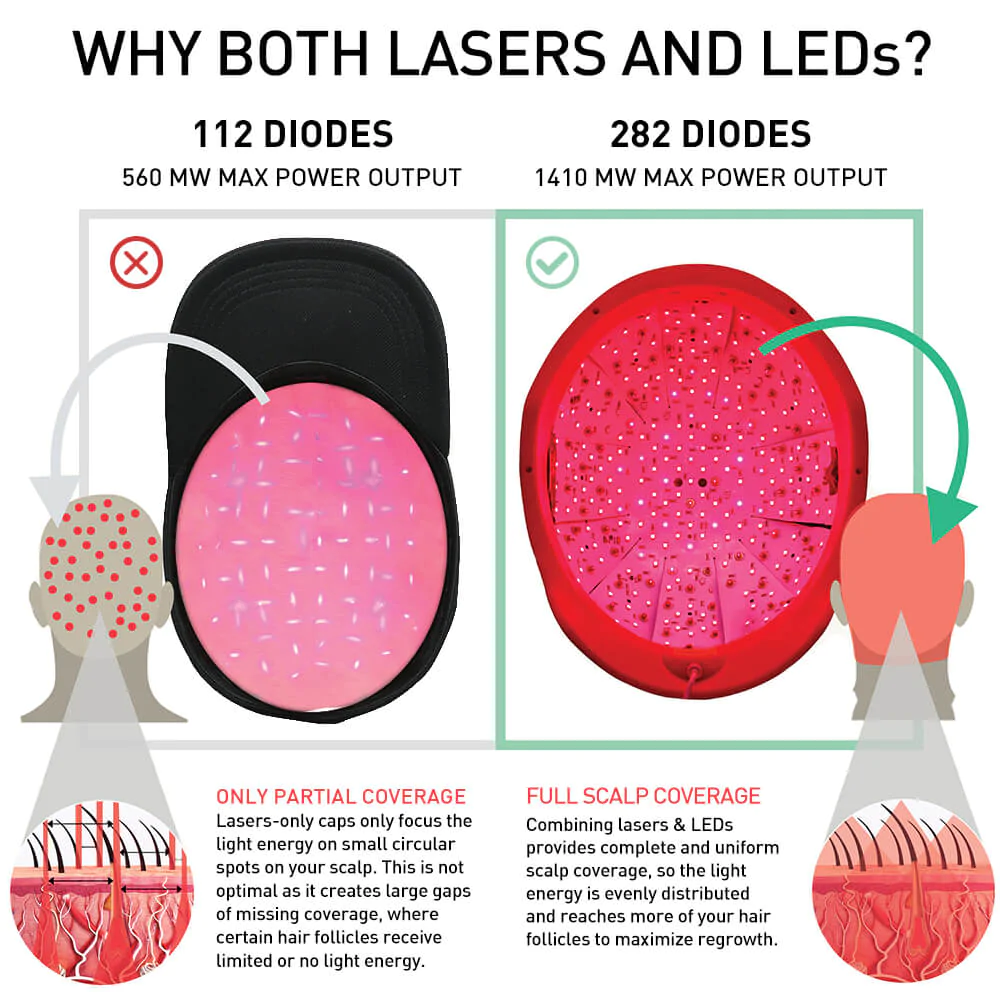
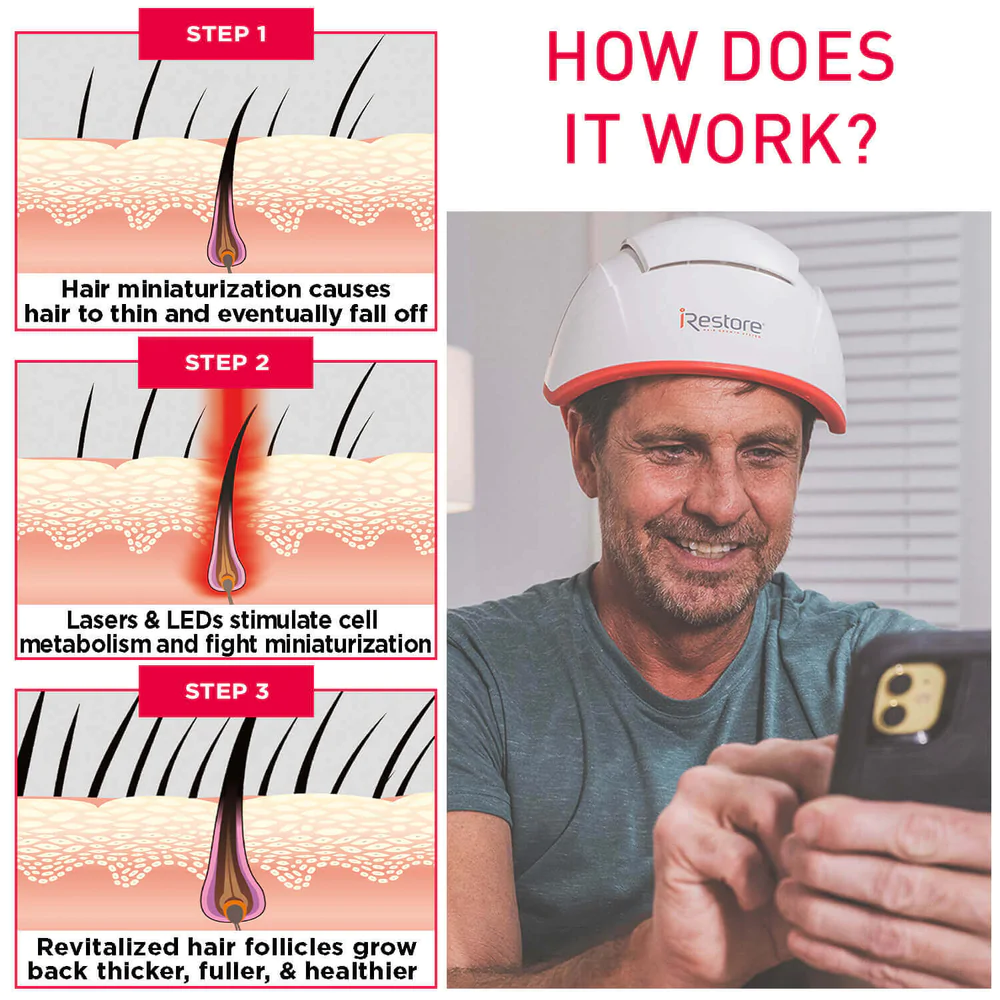
When should you consider commencing a hair restoration program?
Dermatologists agree that starting a hair restoration program as early as possible is the key to achieving fast and effective results. Hence you should start as soon as you can see early thinning. We even go to the extent of advocating pre-restoration in patients with a genetic history of balding.
With hair biology, scientists work in the prognosis of regrowth using the 50% rule. This means if your hair shaft diameter is less than 50% of your normal diameter, the chances of reversing hair loss dramatically decreases. This once again illustrates the importance of timely management.
What are other methods used to treat hair loss?
There are four other methods to reduce hair loss, and in some cases regrow hair.
Topicals: the most commonly used topical is minoxidil in concentrations ranging from 2 to 7%. This cost effective ingredient can be purchased without a prescription. It comes as a lotion or mousse application
Oral agents: for males, oral DHT (dihydrotesterone) blockers are advocated. They include dutasteride and finasteride. These tablets block the formation of a molecule known as DHT which is implicated as the messenger to miniaturized hair follicles. Though rare, side effects of dutasteride and finasteride can occur. Your dermatologist will cover this in more detail.
Injectables: the most common injectable is Growth factor injections or platelet rich plasma. These injections need to be performed monthly for 3-5 consecutive months, thereby spacing to twice a year. Injectables are best combined with laser light therapy as well as topicals and or oral medications.
Fractional lasers: including CO2 and thulium lasers can increase hair growth by 30%. These lasers are primarily used to deliver activities including growth factors and other topicals. Though promising in the results, fractional lasers are hampered by costs. They are not as well studied as compared to low level laser devices.
Surgery: is reserved for advanced cases of hair loss. It works by a concept known as donor dominance, namely repurposing hair from the back of the scalp to the top (vertex or crown) or bitemporally (front). Surgery does not grow hair, it merely transfers strong and healthy hair to bald areas. Dermatologists advocate the use of laser light therapy before and after surgery.
What is a simple but effective starting point?
Remember, the sooner you start preserving follicles, the better the outcome. The two combinations I advocate is to combine a topical lotion, namely minoxidil 5% with laser light therapy, namely the iRestore. The reasoning is as follows-
- Cost effective: minoxidil works out to less than 50 cent per day. The purchase of iRestore is a once off fee, as compared to laser treatments in a clinic which ranges from $400 to $900 per session. Factor in 6-8 sessions annually, for life, it makes sense to have a home device.
- Side effect free: unlike tablets, topical and LLLT are largely side effect free.
- Non-invasive: for those who are needle phobic or not yet ready to take the surgical leap, gentle LLLT is ideal.
Written by Dr Davin S. Lim, Dermatologist
User and advocate for the iRestore system
